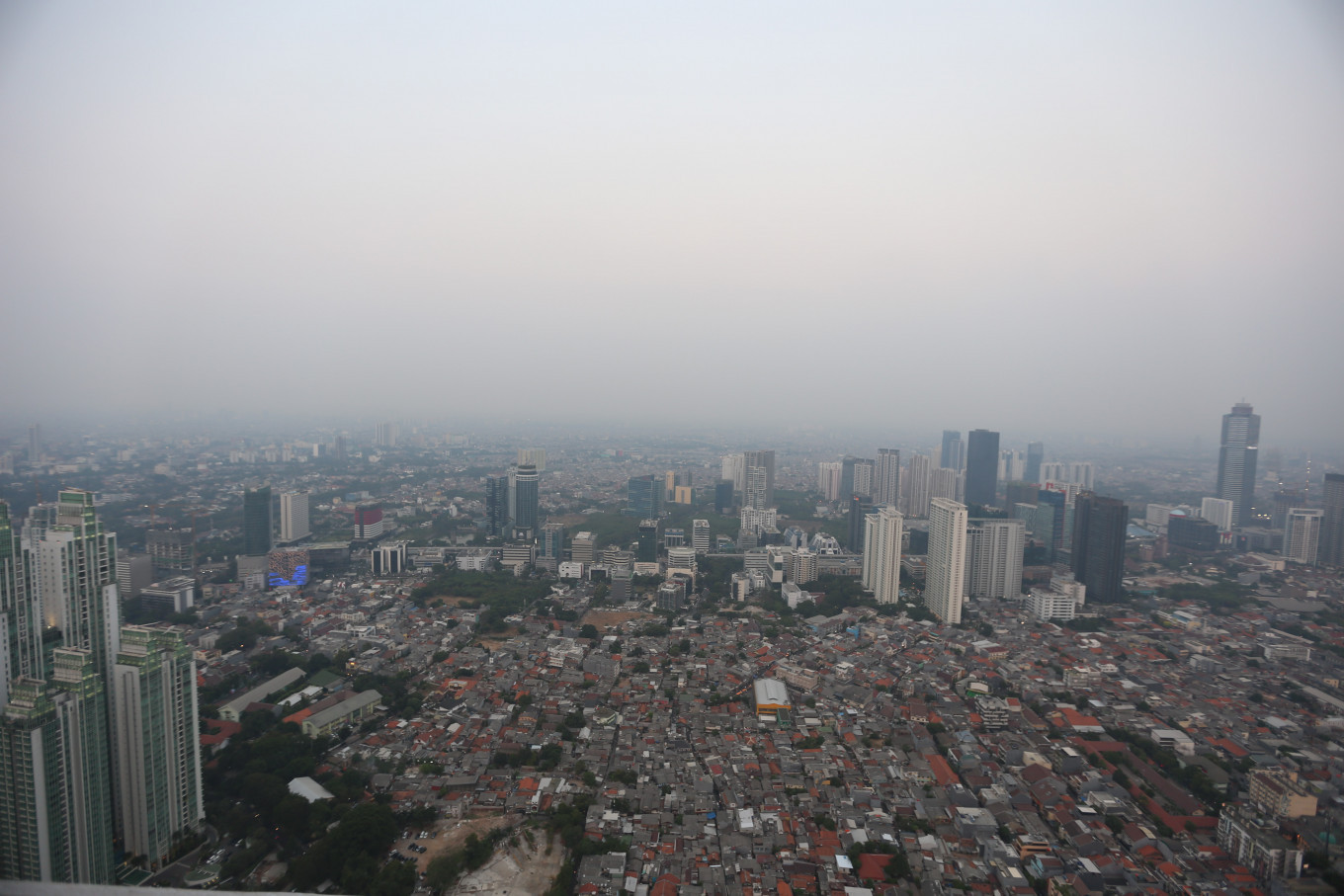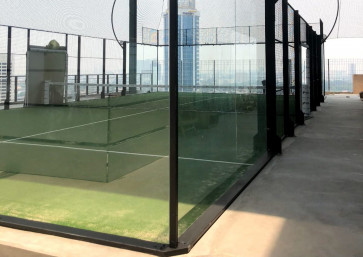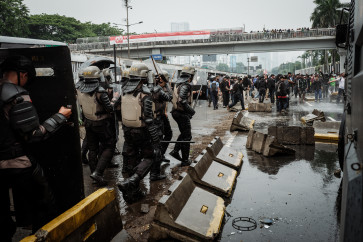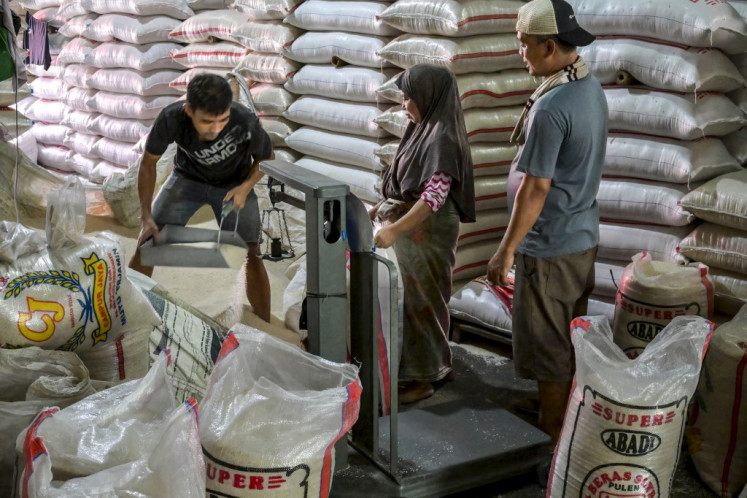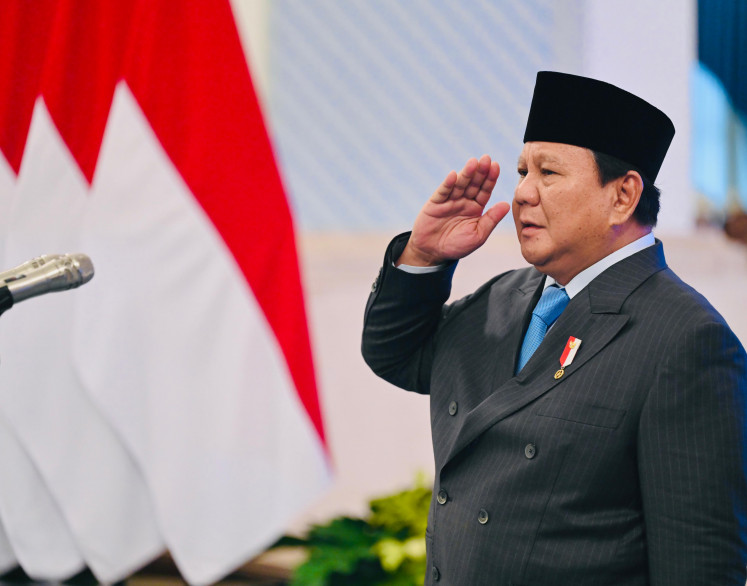Popular Reads
Top Results
Can't find what you're looking for?
View all search resultsPopular Reads
Top Results
Can't find what you're looking for?
View all search resultsCap and trade to deal with carbon emission conundrum
Even the popular carbon tax scheme still has "loopholes" that allow polluters to emit as much as they can afford to pay in terms of carbon taxes.
Change text size
Gift Premium Articles
to Anyone
D
iscussions about greenhouse gas (GHG) emissions have been heating up, especially after the world experienced its hottest month in July of this year. People are becoming increasingly aware that the Earth is in a bad state.
For people in Greater Jakarta the impact of carbon emissions is present and dangerous. The Swiss company IQAir recently found that Jakarta’s air quality was the worst in the world, which is unsurprising as the Indonesian capital has been infamous for its polluted air over the last few decades.
Various proposed solutions to mitigate or at least alleviate the negative impacts of carbon emissions have been proposed. These range from carbon taxation and reinstatement of hybrid work systems to encouraging a shift from combustion engines to electric vehicles.
Introducing these diverse solutions signifies a step forward, as we are beginning to realize the importance of safeguarding the environment for a habitable future. Among the array of proposals, the "cap and trade" solution is rarely brought to the surface, despite its potential to be a suitable option to address Indonesia's current situation.
Simply put, cap and trade is a scheme where the government sets a limit (cap) on the amount of carbon emissions permitted to be released into the air. At the same time, companies hold an allowance to emit pollutants, which can be traded if pollution allowances are available. Cap and trade is not a new scheme. Decades ago, the United States created its first cap-and-trade program in Title IV of the Clean Air Act Amendments of 1990 to regulate sulfur dioxide emissions through allowances. In California, the United States, this scheme consistently reduced overall GHG emissions by 3 percent per year from 2015 to 2020 and is projected to achieve 5 percent annually until 2030, according to the Center for Climate and Energy Solutions.
There are several reasons why cap and trade could be a suitable alternative solution to address pollution issues in Indonesia.
First is that the cap and trade scheme offers more flexibility for industries. In a certain period, industries might produce less than usual, resulting in surplus pollution allowances. These allowances could be reallocated to industries that require excess production in the same period.
Second, the cap and trade scheme provides room for industries with less robust emission-management systems to continue producing up to a certain level of pollution. Thus, this scheme can balance industrial productivity and environmental preservation in the medium-short term. This aligns with Indonesia's current challenge: Accelerating economic growth while consistently striving for a green civilization.
Third, the cap and trade scheme consistently and firmly limits the amount of carbon emissions in the air, ensuring an aggregate reduction in carbon emissions. This might not necessarily be achieved using other schemes.
Even the popular carbon tax scheme still has "loopholes" that allow polluters to emit as much as they can afford to pay in terms of carbon taxes. Therefore, the cap and trade scheme has a much lower likelihood of a “rebound effect” occurring.
The rebound effect refers to a situation where an innovation meant to reduce carbon emissions per consumption actually leads to excessive usage, resulting in an aggregate increase in carbon emissions.
A famous example of the rebound effect is how 1.5 million households in Mexico participating in a government program to replace refrigerators and air conditioners with newer, more energy-efficient, and environmentally friendly models ended up increasing carbon emissions in the long term due to overuse.
Lastly, the scheme can stimulate industries to innovate using new technologies focused on long-term emission reduction. Naturally, as industries evolve, they will seek more technically efficient solutions to continue production with minimal emissions, thus eliminating the need to purchase excess allowances.
The numerous advantages and suitability of the cap and trade scheme for Indonesia's current needs do not mean this scheme is without flaws. One issue that must be addressed when using this scheme is how often the prices of pollution allowances among industries can become highly volatile due to being entirely market-driven, unlike the carbon tax rates.
This volatility can increase allowance prices, ultimately impacting consumer product prices. An example of this is the sudden 10 percent increase in consumer gasoline prices in Washington, United States, due to recent carbon cap-and-trade compliance costs.
Another issue is that the government must measure the emissions released by industry accurately and consistently. It is not unlikely that some industries might try to manipulate the reported emissions, especially if the monitoring system is not yet well-established and leaves room for exploitation.
Not only proficient in monitoring, the government also needs to be firm in imposing penalties if industries exceed their allotted carbon emissions quotas. The complex role of the authorities/government in this scheme often leads many countries to struggle to adopt it and opt for carbon tax schemes, which are considered easier to implement.
However, regardless of the shortcomings of the cap and trade scheme or other carbon emission reduction efforts, Indonesia has taken at least one step forward toward a green future since society and government are currently increasingly aware of the importance of environmental preservation.
The various carbon-reduction options can ideally be implemented in parallel and simultaneously, allowing the government and the people to tackle pollution issues together without sacrificing the economy.
***
The writer is a graduate student of Gerald R. Ford School of Public Policy -International Economic Development Policy, University of Michigan.

